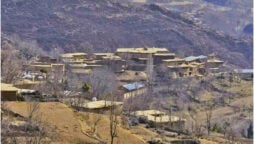Synopsis
The four minarets of Chauburji are the distinctive aspect of the spectacular structure

Chauburji is a beautiful monument that is famous for its unique architectural structure located in Lahore. The name Chauburji is derived from its four octagonal shaped minarets crafted with splendid ancient Persian-Arabic architectural style. It was an entrance gate to a spectacular garden built in 1646. Presently, this remarkable monument serves as a roundabout at Multan Road.
According to the collected data it was constructed on the orders of Jahan Ara, the eldest daughter of Mughal Emperor Shah Jahan. Shah Jahan’s beloved wife Mumtaz was the mother of Jahan Ara.
She was a woman of great political and business significance. She was very fond of artistic architecture and due to her progressiveness and influence, she was considered as the most paramount woman of her time in the entire Mughal Empire. She had the authority to grant resources for the construction of such unique structures.
Chauburji, which once stood as a marvel, has now been reduced to just a square. It once served as a gateway to a magnificent Mughal garden which is believed to have extended from Nawankot in the south. The garden was washed away by a flood.
It was built with red bricks with architectural sophistication of that time. Chauburji was constructed with harmony of different architectural styles that includes the ancient Timurid grace, Mughal architectural technique and Persian-Arabic method of construction.
The four minarets of Chauburji are the distinctive aspect of the spectacular structure. The monument once featured blue and green tiles. This type of art is known as “Kashi Kari”. The structure was decorated with Timurid-style aiwans, beside architectural genius of the Mughal era and the aiwans were emblazoned with Iranian architectural style known as “Ahoopay”. Quranic verses were also written on the structure. Most of these Quranic inscriptions have vanished over the course of time except the Ayatul Kursi which can still be seen inscribed in blue on the building.
Chauburji is registered among the protected heritage monuments in the catalogue of Archaeology Department, Punjab. It was left desolate over the course of time and severe earthquakes have damaged it so badly that two of its minarets have collapsed and cracks have appeared in the whole structure. It was restored in the 1960s by the department of archaeology to some extent.
The glorious structure once again became the talk of the town when the construction of the Orange Line train project was initiated.
The design initially proposed to build the Chauburji underground station. Heritage activists filed a petition against the route and designed plan of the Orange Line project in the Lahore High Court as the proposed plan of the project was to pass within the proximity of Chauburji besides nine other sensitive heritage sites, which was the violation of Punjab Special Premises Ordinance, 1985 and the Antiquity Act, 1975.
The petition stated that this project could cause irreversible damage to the historical monuments. In August 2016, the Lahore High Court gave a verdict to halt the construction of the Orange Line metro project within 200 feet of any monument of historical significance including Chauburji. The order was carried out to prevent heritage sites from deterioration.
After the court’s verdict, the design of the Orange Line project was amended and the proposed underground Chauburji station was changed to an elevated station as per the required UNESCO regulations.
photos: Mohsin Raza/Bol News
Catch all the Breaking News Event and Latest News Updates on The BOL News
Download The BOL News App to get the Daily News Update & Live News.












 Read the complete story text.
Read the complete story text. Listen to audio of the story.
Listen to audio of the story.